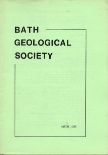Knockan Cliff, Sutherland

While staying at Ullapool Youth Hostel in 1984, a party of geology students and their tutor from Glasgow University arrived to stay the night on their way to the north coast of Scotland to study a section of cliff between the mouth of Loch Eriboll and Smoo Cave.
Learning of our interest in geology, the professor told us about the Nature Conservancy Council’s Geological Trail at Knockan Cliff, and very kindly lent us his copy of a little guide book to the Trail. The year before we had walked the circuit of Knockan Cliff and had merely taken the numbered posts as marking the path to be followed. However, the next day, armed with our new-found knowledge and booklet, we set off to re-visit it.
From the guide book we discovered that while investigating the geology of the Scottish Highlands, Sir Roderick Murchison, the founder of the Geological Survey, regarded the rocks of Knockan Cliff as being the normal sequence for that area; Lewisian Gneiss at the bottom, then red Torridonian sandstone with next a white basal quartzite, followed by late Cambrian limestone and, finally, dark grey marble bearing schists which form the crest of the cliff.
However, many of the leading geologists of the 1860s disputed the fact that the schist at the top was indeed the youngest rock of the succession, until after a great deal of controversy, it was realized that highly altered and re-crystallised rock formed by the action of intense heat and pressure on sands and muds had been driven over the unaltered limestone during the building of the ancient Caledonian Mountains, and which is now known today as part of the Moine Thrust.
After a fifteen mile drive along the main road from Ullapool to the north, passing numerous exposures of rock where the road had recently been widened from ‘single’ to ‘double’ track, we duly turned off at the ‘Viewpoint’ sign and up a short, steep incline to a parking area at the foot of Knockan Cliff.
Having fortified ourselves with coffee, we set off round the Trail, the beginning of which is marked by a view indicator and a geological ‘wall’ containing all the rocks of the locality. Although Lewisian Gneiss does not actually out-crop at the base of Knockan, some boulders of Gneiss had been brought from the shore at Inverkirkaig to line the path for a short distance, the only commercial use for the Gneiss being for road making when it is crushed.
As first the path is a gentle, uphill slope heading in a northerly direction with every now and then a short square post set beside the path, clearly marked with a number corresponding to a number in the Guide Book, and giving a description of that particular bed, the first bed being of the Pipe Rock for which Knockan is famous.
There were twelve beds in all, with the path coming to a small shelter made out of overhanging blocks of Moine Schist and resting on pillars of rock at each corner at the front, situated right on the edge of the escarpment. With a bench of rock for sitting down at the back, cut in limestone and clearly showing how the Schist had ridden over and crushed the limestone to produce a creamy coloured mylonite.
The shelter is only one-third of the way round the Trail, and visitors are warned to turn back at this point if the weather is at all windy, as the path thereafter becomes very steep and close to the edge of the cliff with scree falling away to the bottom of the valley, which is typically U-shaped and carved out by a glacier during the Ice Age.
While enjoying a rest at the shelter and marvelling at the view of sea and the mountains of Canisp, Suilven and Cul Mor to the west with glimpses of the sea in the distance between them, we were amused to watch a herd of cattle far below, supposed to be in a field railed off from the road, wading into the water of a small lochan to get round the end of the railings, then one by one scrambling up on to the road and crossing it to reach the open hillside of Knockan where they disappeared from sight.
As it was a pleasant, almost calm day we continued on beyond the shelter, and without daring to look down or behind us we eventually reached the crest of the cliff. From here on the path winds South again along the top cliff. The path then gradually turned were duck-boards over the wettest places.
To reach the car park, the path had to go some way beyond it before turning down, and when clear of the cliff itself we came upon the cattle chewing the cud, contentedly lying in the heather we had seen from the shelter.
It had taken us nearly three hours to complete the Trail, and by the time we got back to the car it was warm enough to sit in the sun to eat our picnic lunch, having enjoyed a most interesting walk and climb.
